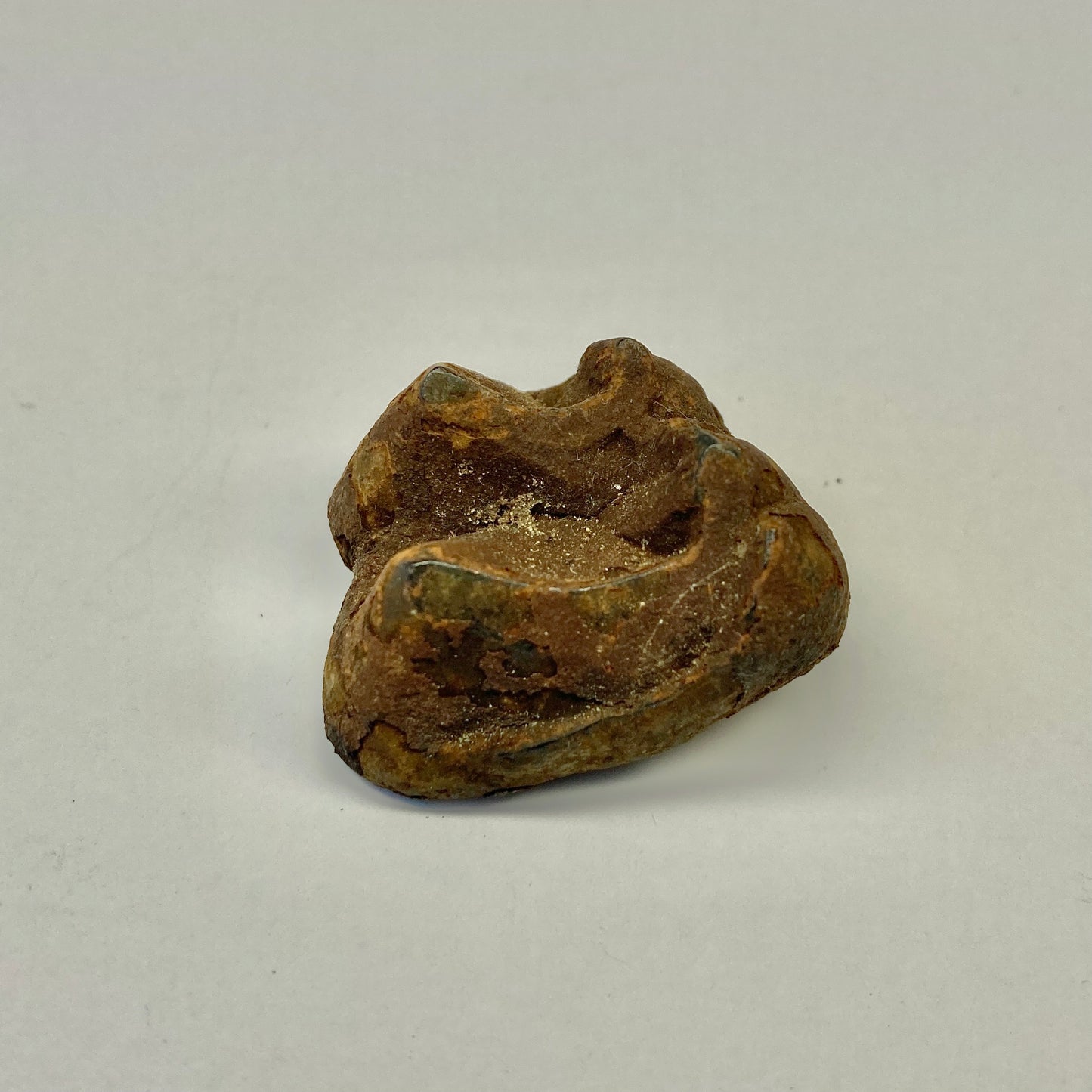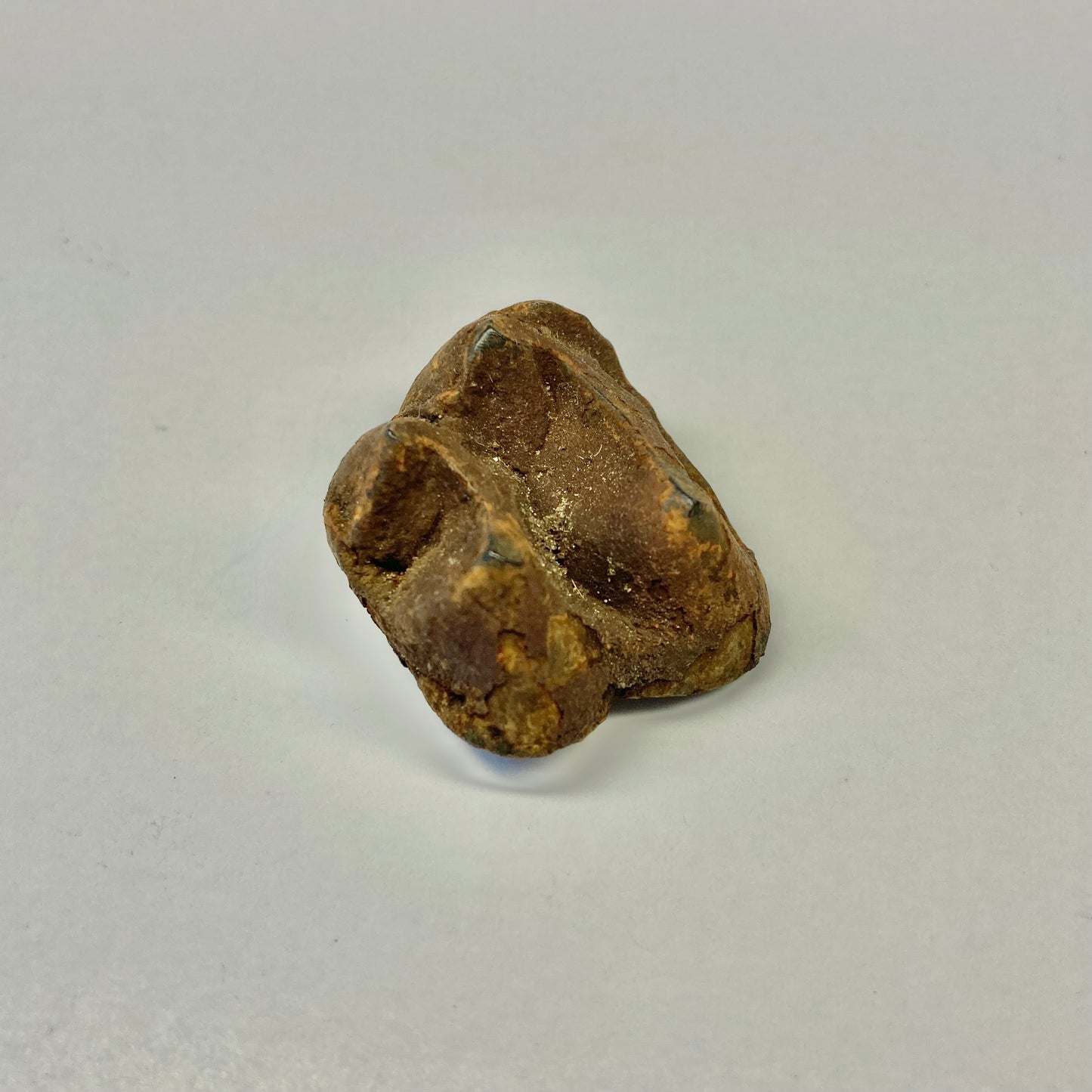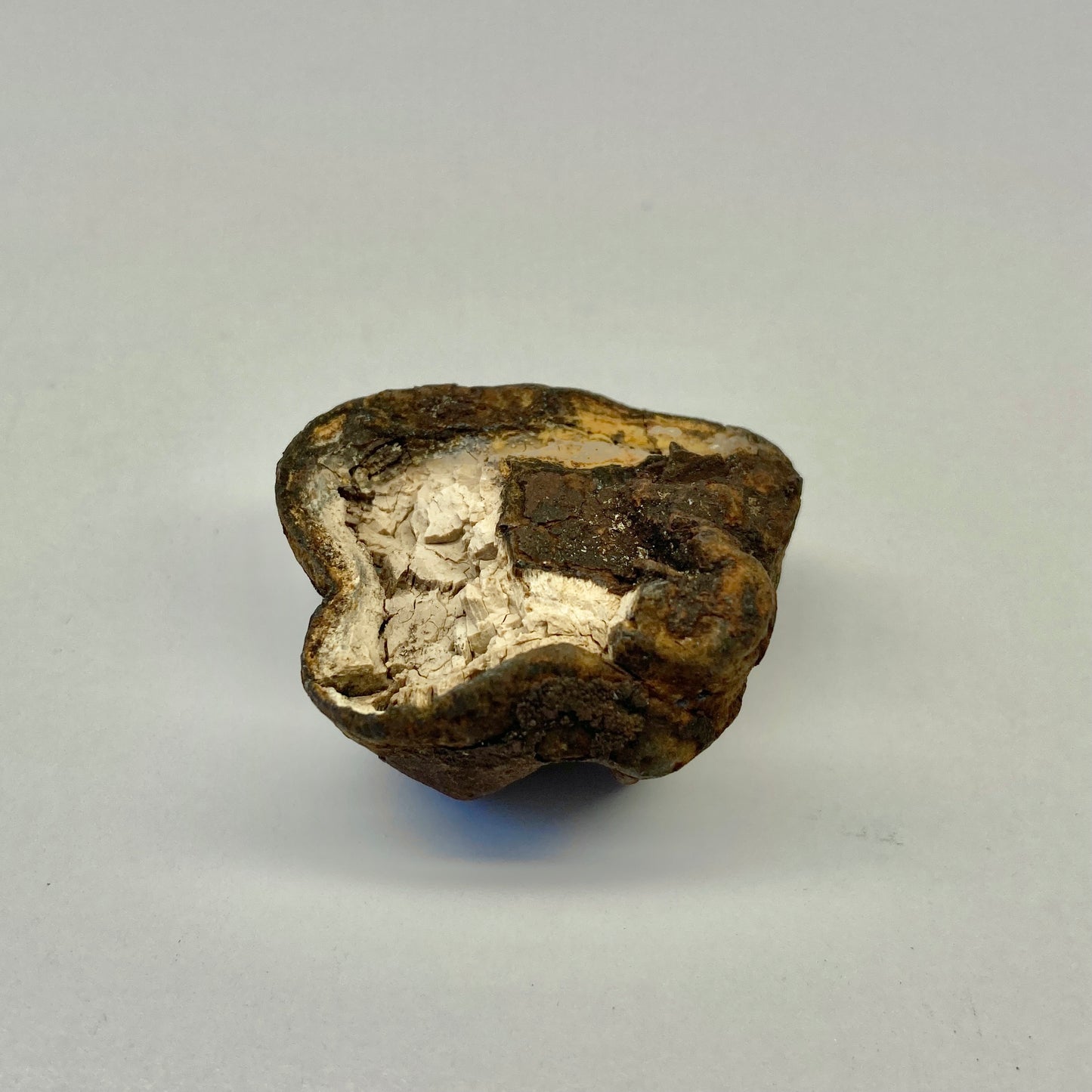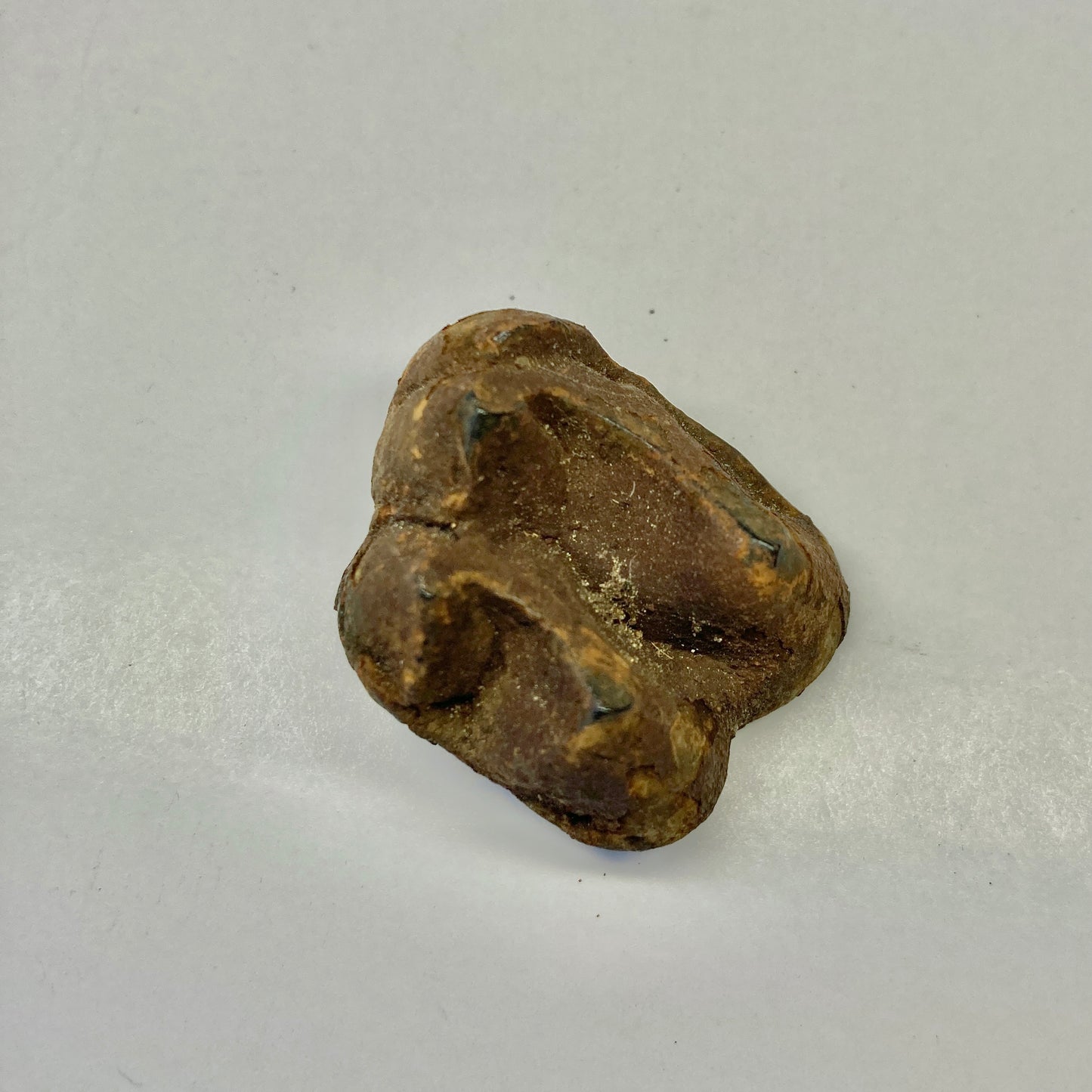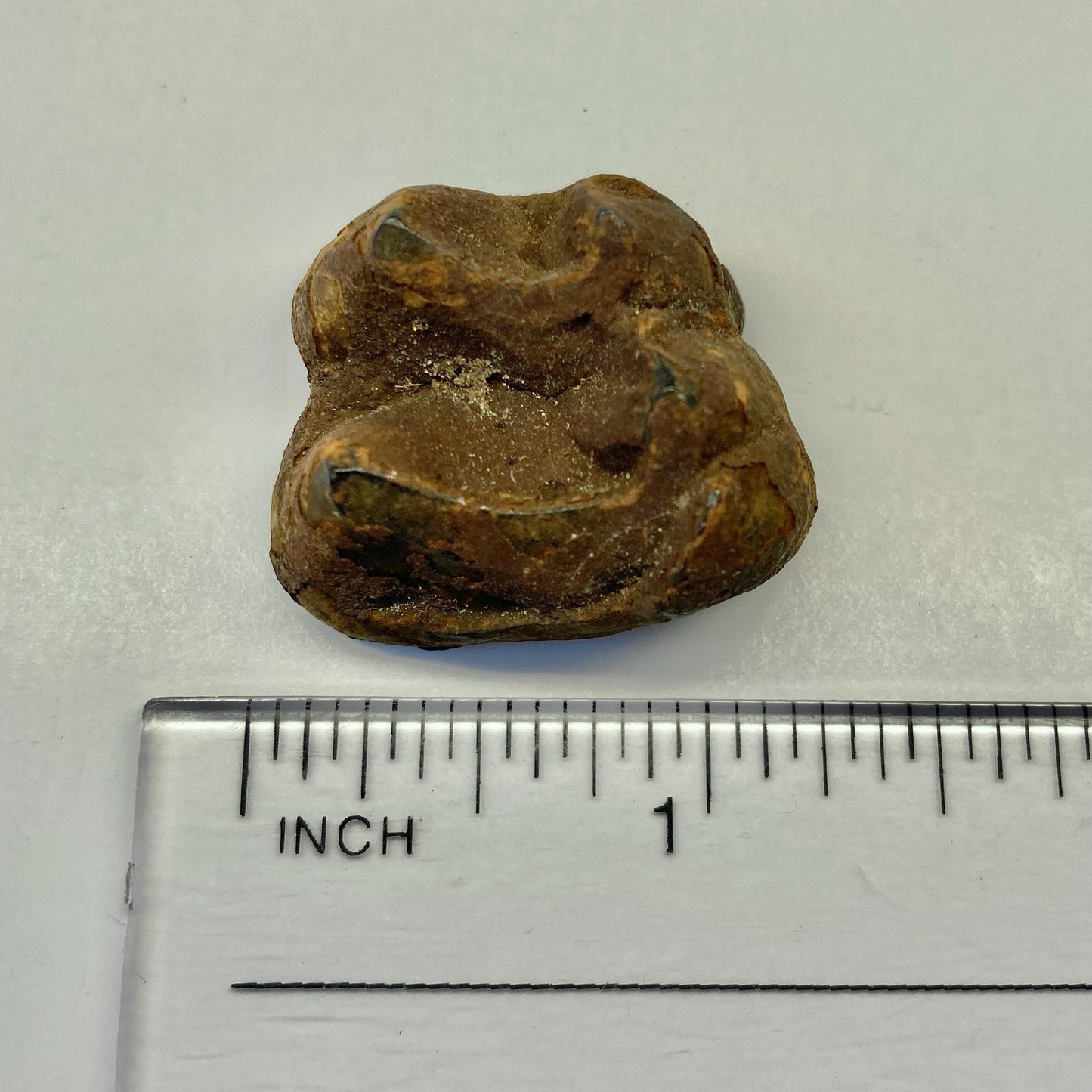Past & Present Science and Nature Store
Tapir Tooth - Tapirus sp.
Tapir Tooth - Tapirus sp.
Couldn't load pickup availability
This molar from a Pleistocene-aged tapir tells us that these mammals are actually extremely similar in appearance to the tapirs that we see today in South America and Asia.
Prehistoric tapirs were short, hoofed browsers resembling a pig with a small trunk. These mammals would use their strong noses to smell and gather vegetation. Tapirs grew to 7 feet long and stood at 3 feet tall and could weigh over 700 lbs. They lived near water sources and were excellent swimmers. Their modern day descendants have not changed much at all.
Tapirs are very abundant in the fossil record particularly in Florida in which there are no less than six known extinct species. This tooth is a molar with a low crown and two apparent ridges. Teeth with roots are not commonly found as their fragility causes them to break very easily.
Type: Tapir Tooth
Species: Tapirus sp.
Age: Pleistocene (15,000 years old)
Locality; Withlacoochee River, Florida
Size: 1.25 x .94 x .69 inches
Weight: .15 oz.
Share
